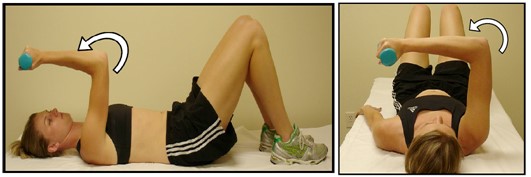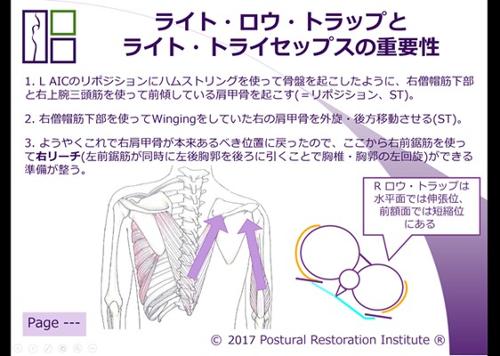Question: For a few years I have questioned bilateral hip external rotation limitation and restricted left hip external rotation. I have seen the limitation primarily in a PEC pattern and L AIC, which can be contributed to pelvic alignment, however, my question remains how to improve left hip external rotation after bilateral negative ADT. I have sent patient’s for MRIs with negative results for pathologies.
Lack of L FA ER, particularly after repositioning, can be tricky. It doesn’t happen often, and there are a few different reasons for it. So I thought I’d add my two cents, and hopefully I can shed some light on the topic.
How the body attains a reduction in L FA ER and R FA ER are can occur similarly, but often they don’t occur for the same reason. However, it’s not usually due to anterior hip capsule pathology. The iliofemoral ligament is designed to limit FA ER. So if FA ER is limited, it’s probably not due to a hyper-lengthening of the ligament designed to limit that motion. And in a PEC patterned individual, you may see a decrease in FA ER, but not normally. In a PEC patterned individual, you’d normally see a reduction of FA IR, and normal range of FA ER.
Often you’ll see an abundance of FA IR in an individual with a pathologically unstable anterior hip ( + ADT and – EDT) usually in the patho PEC pelvis individual, or an exceptionally unstable hip capsule in the L AIC presentation. In that instance, the femoral head has essentially moved so far anteriorly because the iliofemoral ligament isn’t available to stop it. The result is a hyper-lengthened iliofemoral ligament that presents with an excessive amount of FA IR, as well as FA ER. In order for the ischiofemoral ligament to become pathologically long and unstable, the femoral head would have to be properly seated (intact anterior hip ligaments) and weight bearing tasks would have to be in a position of AF ER and excessive FA IR for an extended period of time. That would be someone who is walking in a non-compensatory gait pattern. Their femur has not compensated into FA ER during swing phase. It happens, but is very rare.
Mechanically speaking, a reduction in seated R FA ER is usually seen in a pelvic position of AF IR, specifically, pelvic inlet adduction and ipsilateral thoracic abduction. If it is seen in a patient after repositioning, it’s usually indicative of a posterior pelvic inlet issue that requires inhibition, or the inferior gluteus maximus requires inhibition, but probably both. And in both instances, improved contralateral posterior mediastinum expansion is a must.
However, in this particular scenario, we have a reduction of L FA ER. Even if this particular patient presented as a L AIC with an unstable anterior L hip ( + ADT and – EDT), or as a non-patho PEC pelvis with an unstable anterior L hip, the laxity of the anterior hip capsule is not going to limit FA ER. Similarly, pathological tightness of the L ischiofemoral ligament, or really anything in the posterior pelvic outlet, is not going to cause a lack of L FA ER because all of those structures either promote or permit FA ER. Posterior capsule tightness will cause a limitation in FA IR, not FA ER. There are absolutely instances in which an excessively unstable anterior hip requires posterior capsule inhibition in order to properly seat the femoral head into the posterior hip socket to ensure proper transverse plane mechanics. And in those instances, you will need to perform AF IR while in FA IR. And that is where the Pelvis Ascension Drop Test becomes valuable. But even then, FA ER is probably not going to be limited.
James, Jesse, and I have talked about this event on numerous occasions, and 90+% of the time when L FA ER is limited after repositioning it’s because the L anterior pelvic inlet needs to be inhibited. One good cue is most of the time, they can’t shut off their L quad, or their L quad is much more active than it ought to be when performing L hamstring, L IC adductor, L thoracic adduction, L ZOA, or L serratus activities. All of which causes a problem with the L pelvic anterior inlet.
Couple of testing items I would consider. My hunch is currently this individual has less than a 3/5 on their L Hruska ADDuction Lift test. Their L Hruska ABDuction Lift test is probably less than a 3/5 as well, but it might be a 3/5 or 4/5. My hunch is this patient probably had Superior T4 Syndrome upon initial evaluation, and very well still might. And it wouldn’t surprise me if they had a B TMCC presentation upon initial evaluation as well. Regardless if this patient’s initial presentation was PEC, patho pelvis PEC, or very unstable L anterior hip L AIC, they are not going to know how to perform L swing phase properly because their L quad will prohibit it. Other phases of gait will clearly be limited as well. But specific to this particular question, L FA ER is a push off/swing phase issue. Just because the dominant neuromechanical pattern is L AIC/R BC/R TMCC doesn’t mean they actually know how to appropriately get into and perform the L AIC/R BC/R TMCC pattern correctly, particularly after getting them neutral, and particularly after a R AIC/L BC/L TMCC pattern activity.
Here’s a few suggestions that have worked for me. First, consult the L pelvic anterior inlet inhibition section of your Pelvis Restoration manual, or the PRI Non-Manual CD, if you have it. I would consider taking some of the standard PRI right gluteus max activities and flipping them around to do them on for the left gluteus max (as this is more of an orthopedic issue). For example, from the Myokinematic Restoration CD, Supine R Gluteus Max 1, Sidelying R Gluteus Max 10, 14 (with or without the band), or 15. I would consider flipping all of those over and work on L AF ER/FA ER so they can perceive L gluteus max activity, but don’t spend a lot of time on those activities. The other thing I would consider is an Infraclavicular Pump PRI Manual Technique. Make sure you’ve done some kind of L AIC Manual Technique first and make sure they have attained a quality L ZOA before doing the IC Pump. Consider Seated Integration 36 and/or 39. They need to learn how to alternate their rib cage and pelvis frontal plane mechanics, particularly their pelvic inlet. I would also consider Sidelying L Gluteus Medius 32 because they have to use R and L obliques (in a different manner) to stay on the wall, L gluteus max for AF ER, L hamstring for hip extension during knee extension without L quad dominance, and L posterior gluteus medius for FA ER because the femur is in FA IR. And I would consider Standing Integration 55 to ensure they understand how to perform L AIC/R BC properly. Obviously, you’ll probably want to follow that up with Standing Integration 53 or 56.
I think the L pelvic anterior inlet inhibition section is tricky. The real trick with L pelvic anterior inlet inhibition is the make sure the left quad/rectus femoris/vastus lateralis doesn’t take over. As you’ll notice in the inhibition section, all the activities are regular, normal stuff. The key is to make sure the individual can do any of those tasks without use of their left quad. Some of them are harder than others, but I’d focus on the standing ones. Pick one or two standing ones, and make sure they are using their L IC adductor, anterior gluteus medius, hamstring, and obliques. If they are using their quad in a dominant fashion, they have an anterior inlet problem.
Yes, the PRI left standing tasks instructions say something like "feel the anterior thigh." While they should feel the L quad, it should be the 4th most dominant muscle they feel working. If it is a strong #1, they have an inlet issue. And here’s a little secret about decreased FA ER, particularly after repositioning: it’s an inlet problem; R posterior inlet or L anterior inlet.
Once they have figured out how to not use their left quad during L stance tasks (which is anterior inlet inhibition), you can then go through the process of getting into L AF ER/FA ER. But if their L quad is on during mid stance, it will be on too much during late stance, push off, and swing, thus preventing FA ER. Gotta start with L AF IR/FA IR, but this issue has literally nothing to do with the hip capsule. Need to inhibit the L quad during AF IR/FA IR, so you can perform AF ER/FA ER well.
After you can perform L AF IR/FA IR without the quad dominating, then make sure you can perform L AF ER/FA ER with the gluteus max, and not the quad. That’s where you I would suggest flipping some of the regular R gluteus max activities. Then work on some rib cage and pelvis alternation, L FA ABD (sidelying L gluteus medius #32 is a gold mine), L AIC/R BC activities and R AIC/L BC for alternating reciprocal tasks. But the initial process of making sure you can have them do WB tasks without use of the L quad is the important first step to get them to learn how to go from L mid stance to L swing without quad dominance.
Hopefully, I was able to clear things up a bit. Additionally, the lack of L FA ER is a topic that we don’t usually have the opportunity to talk about or explain very often, mainly because it doesn’t happen as often as other FA or AF issues. But, the L pelvic anterior inlet inhibition section is in the manual and discussed during the Pelvis Restoration course, so it should give you a pretty good head start.



 (89) Left Stance Interrupted Swing
(89) Left Stance Interrupted Swing
